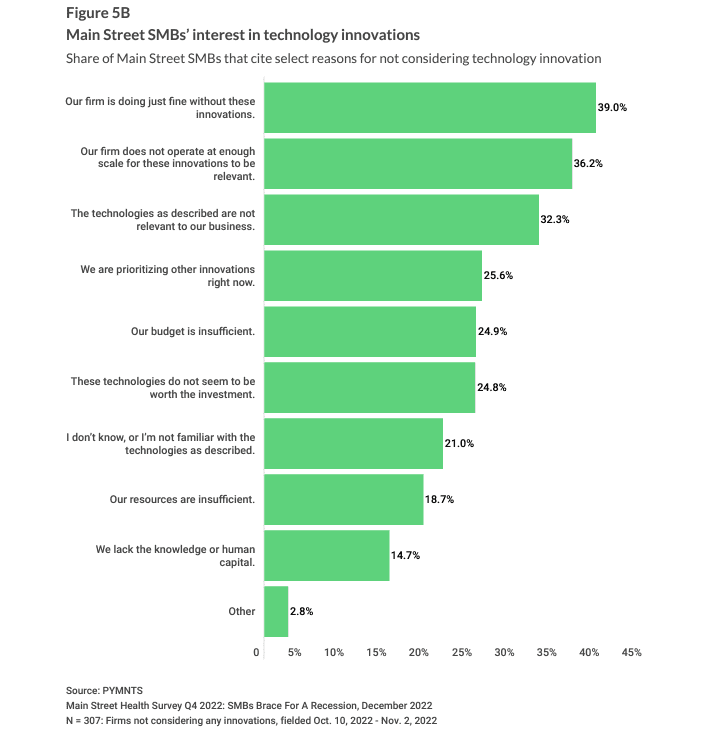Consumer Spending Rebound May Spark Main Street Retailers’ Digital Makeover

January’s retail figures caused a collective sigh of relief, hinting we may be turning an economic corner.
The 3% consumer spending surge felt especially sharp after November and December saw sales decline by 1% and 1.1%, respectively. The Census Bureau-issued report on this much-anticipated barometer of U.S. economic activity stated that sales at retailers and restaurants had risen 6.4% year-over-year, not adjusting for inflation. Department stores saw the biggest gains with a 17.5% monthly increase, followed by a 7.2% rise in food services and drinking establishments and a 6.4% increase in auto sales.
Main Street retailers will presumably benefit from the consumer spending surge. However, these small businesses may want to consider any bump a reprieve from inflation and economic uncertainty instead of automatically assuming it will progress into a return to “normal.” A hint that this turnaround may be temporary is the Census-issued numbers matching CPI data released the previous day, suggesting that the month’s gains result from higher prices instead of increased activity.
Next month’s numbers should provide more certainty about where the economy is headed. Meanwhile, any business that had deprioritized modernization innovation investments, especially in the small business retail sector, may view this as an opportunity to catch up.
As noted in the PYMNTS’ “Main Street Health Survey Q4 2022,” many sector small businesses have chosen to combat inflation’s effects primarily by marking up prices. Thirty-one percent of firms surveyed in October 2022 said this was their most important inflation-fighting effort. During the same month, 11% of firms cited lowering business costs as an action taken to combat inflation, down from 16% in July 2022.

It is interesting to note that around one-quarter of SMBs cited budget-related concerns. As, and when, January’s consumer spending boost hits Main Street registers, small businesses may consider reinvesting any revenue toward modernization or automation tools as part of a long-term cost-cutting strategy.
There are multiple approaches and levels of investment toward modernizing systems that are available to small business retailers. In some cases, it may be as simple as merchants addressing the “awareness gap” regarding consumers’ knowledge of already-existing features. For other retailers, 2023 could be the year their business broadens consumer payment choices to include digital wallets, which are seeing increased use online and worldwide. Or, change for some firms may be as dramatic as instituting new forms of self-checkout.
Whichever modernizing approach to lowering costs small business retailers choose to take, it may be a worthwhile investment in their long-term bottom line. Because if increased spending mainly continues to be driven by increased prices, it may not be long before businesses have another “rebellion” on their hands.
